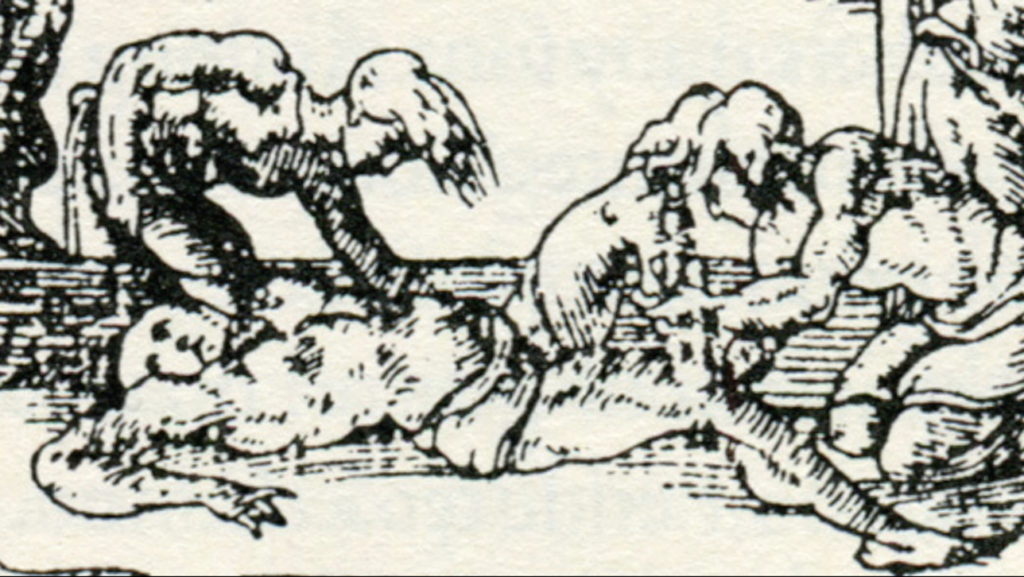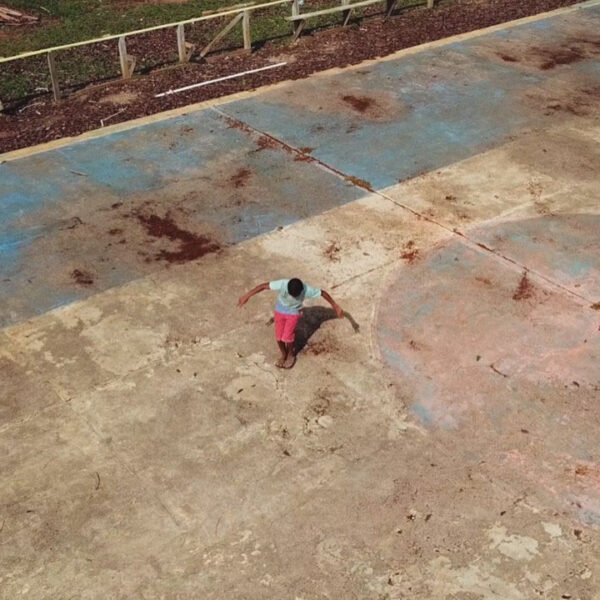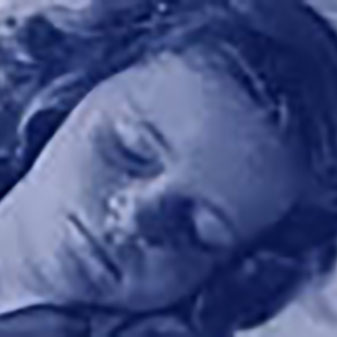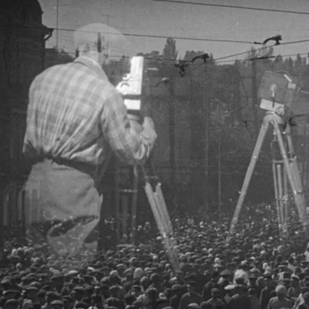An accompanying description in this proto-Orientalist book called, Cosmography of the Levant, portrays Tripoli as a “city of great pleasure and delectation.” Thevet evokes the city’s spacious baths made of marble and vaulted ceilings, and as spaces reserved for men “where Turks, Moors and Christians can freely bathe.” He writes that the “so-called slaves” working there resort to “ten thousand caresses” to earn “gratuities or some wine” and cautions visitors not to pay them more than three or four coins.[2]
This text that strangely alludes to contemporary economies of (sexual) tourism adds to the eeriness of the image. It centers it, for me, around enduring relations of power between Western travelers (or invaders) and local laborers; relations that are archetypal and symbolic, but that also involve bodies in affective proximity; bodies that feel, suffer and remember. It is as if this one archival image was like an “angel of history” propelled by the proliferation of wreckage over wreckage of images indefinitely piling up; promotional videos for gay saunas in London, broadcast footage of violent arrests in a Hammam in Cairo, excerpts from a forgotten gay Egyptian drama from the 1970s, a magnificent 16th century Safavid miniature representing a bathhouse, footage of grueling training drills of American marines, paintings by Fernando Botero simultaneously veiling and exposing the horrors inflicted at Abu Ghraib, and others, many others…
As Baumann and Tusa suggest in their prompt, this image—as a document representing the real—can only be apprehended in our present moment by recognizing the ways it blurs out neatly delineated spatiotemporal distinctions. Approaching it from this perspective exposes “the political and social intertwinements and interdependencies of divergent realities in a global flow.” It responds to their invitation to think of reality as a concept that is “elastic enough to grasp the multifold, antagonistic relations between people, powers, and ecologies.”
Like Thevet once, I also recorded images of a Hammam in Tripoli. Maybe it was the one that he visited. But my images contain no bodies, maybe just ghosts. The Hammam I filmed was abandoned and dilapidated. It had palimpsestic walls like the layers of skins on bodies impregnated with infinite sensorial memories and invisible traces of countless untold stories. Hammams are places of erotic pleasures and illicit queer adventures, but also of vicious crackdowns, of bodies confined and controlled. They are sites where histories of empire and histories of sex converge and congeal. They reveal as much as they conceal. They resist a western obsession to unveil and (re)present the physical world through ocular regimes of knowledge. They are saturated with dense layers of steam that obstruct vision, musty smells that intoxicate the mind and echoey sounds that resonate.
Figure 2- Al-Atlal (The Ruins) (2021), an essay film by Raed Rafei.
Images are like ruins, they can be excavated. For Catherine Russell, they are fragments from a vast expanding collective archive that, in our digital era, can be infinitely recomposed and rearranged through “archiveology,” an act of creating a new language, an act of resurrection, of building new narratives from the relics of official and fixated archives. But these narratives generate new fragments, themselves ruins in the making, always challenging us to “imagine the limits of visibility insofar as all images are incomplete, mere pieces of larger views that are missing.”[3]
During pre-Islamic times, nomads coming across abandoned places of dwelling declaimed powerful poems triggered by ruins and their strong pull towards the past. This style of poetry called, wuquf ‘ala al-atlal or “standing by the ruins,” evoked a foregone love story and pondered the inevitability of change and the passing of time. The digital poet muses over fragmented and fragmentary images circulating in an endless global flow to make sense of regimes of control and power. Like Marker, he looks for a hidden map that connects them. But the map dissolves as soon as it takes shape. It’s made of shifting lands and waters.
This text is a reflection on Al-Atlal (The Ruins), a short essay film I made in 2021.



